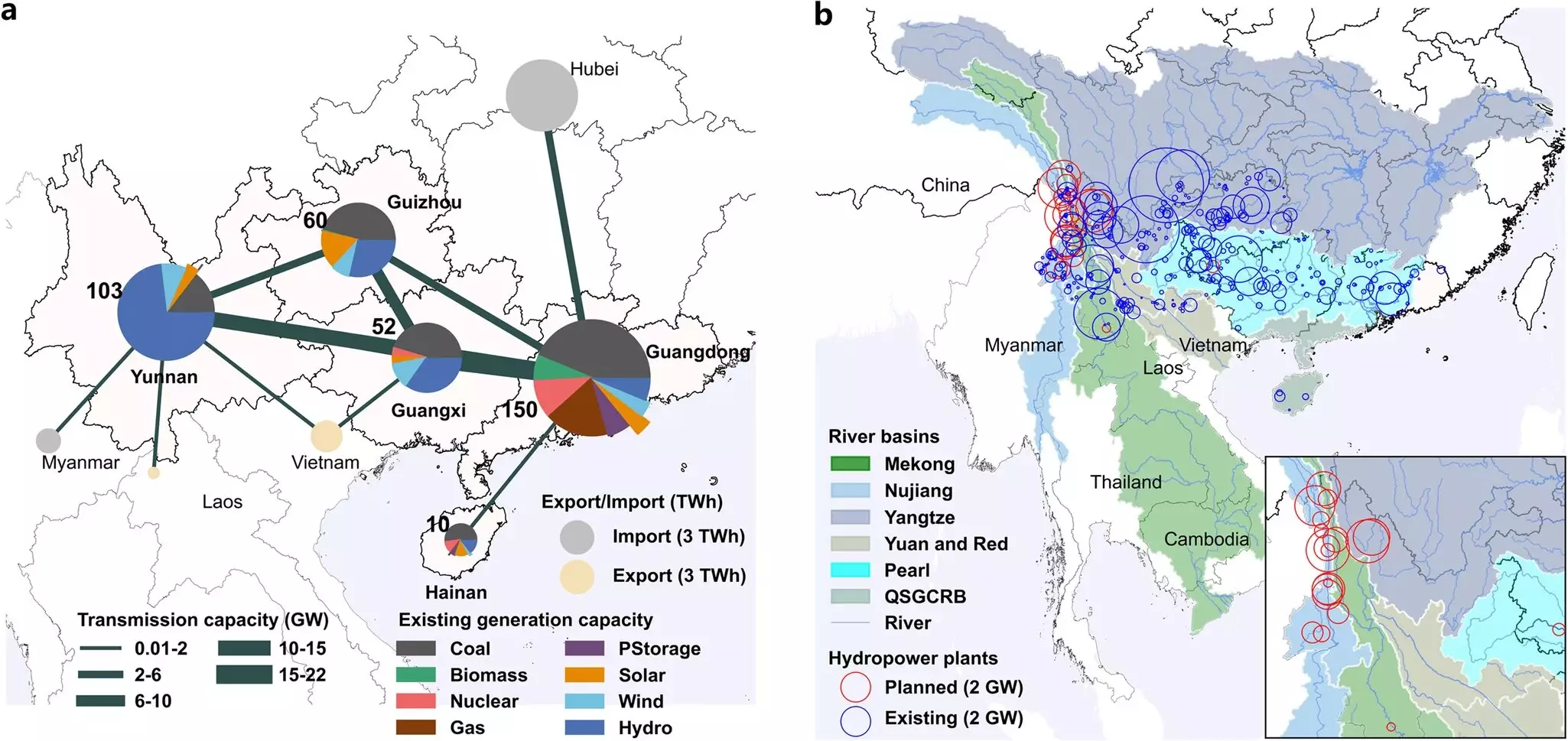With China taking bold steps towards achieving carbon neutrality by 2060, the decarbonization of the China Southern Power Grid will undoubtedly have consequences, some of which may not be immediately apparent. As Stefano Galelli, an associate professor in the School of Civil and Environmental Engineering at Cornell Engineering, points out, the negative impacts on river basins, most of which flow from China into downstream countries, and the reduction of cropland in China will need to be carefully considered. The construction of several dams for hydropower production and the conversion of significant amounts of cropland to support solar and wind energy production highlight the potential environmental trade-offs that may arise.
Building dams for hydropower production, particularly on transboundary rivers such as the Salween and Mekong, poses a significant threat to biodiversity and ecosystems. The alteration of river flow as a result of dam construction can have far-reaching consequences on riverine ecosystems and the communities that depend on them. In countries like Cambodia, which heavily rely on the Mekong River for fisheries, the implications of additional damming by China could be detrimental. The blockage of sediment and nutrients from reaching river deltas can impact the productivity of ecosystems and fisheries, while also affecting migratory fish species.
Limits on Land Use for Energy Production
As China strives towards decarbonization, the reliance on solar and wind energy production will require a considerable amount of land, leading to ecological and sociological trade-offs. The push for self-sufficient food production to ensure food security, coupled with the growth of the electric vehicle industry, will further strain available land resources. The need to balance land use for agriculture, solar, and wind energy production presents a complex challenge, especially in regions like Guangxi province, where land availability is limited. The uneven distribution of land requirements for solar and wind plants may place a heavy burden on local communities, both economically and environmentally.
Despite the challenges associated with decarbonizing the China Southern Power Grid, there are innovative solutions and technological advances that show promise for mitigating environmental impacts. From floating solar panels on existing dams to agrivoltaics that combine solar energy with agricultural activities, there are various approaches that can optimize land use efficiency. Additionally, advancements in battery technology, carbon sequestration, and electricity demand management offer opportunities to enhance the sustainability of energy production. While the transition to carbon neutrality by 2060 may require significant changes, ongoing technical innovation and the adoption of strategic approaches can pave the way for a more sustainable energy future.
As China takes the lead in the global effort to combat climate change, it must navigate the complex landscape of environmental considerations associated with decarbonization. By addressing the hidden costs and unintended consequences of transitioning to renewable energy sources, China can set a precedent for sustainable and equitable energy transitions worldwide. The crucial importance of balancing energy needs with environmental preservation underscores the urgency of making informed decisions today that will safeguard the planet for generations to come.


Leave a Reply